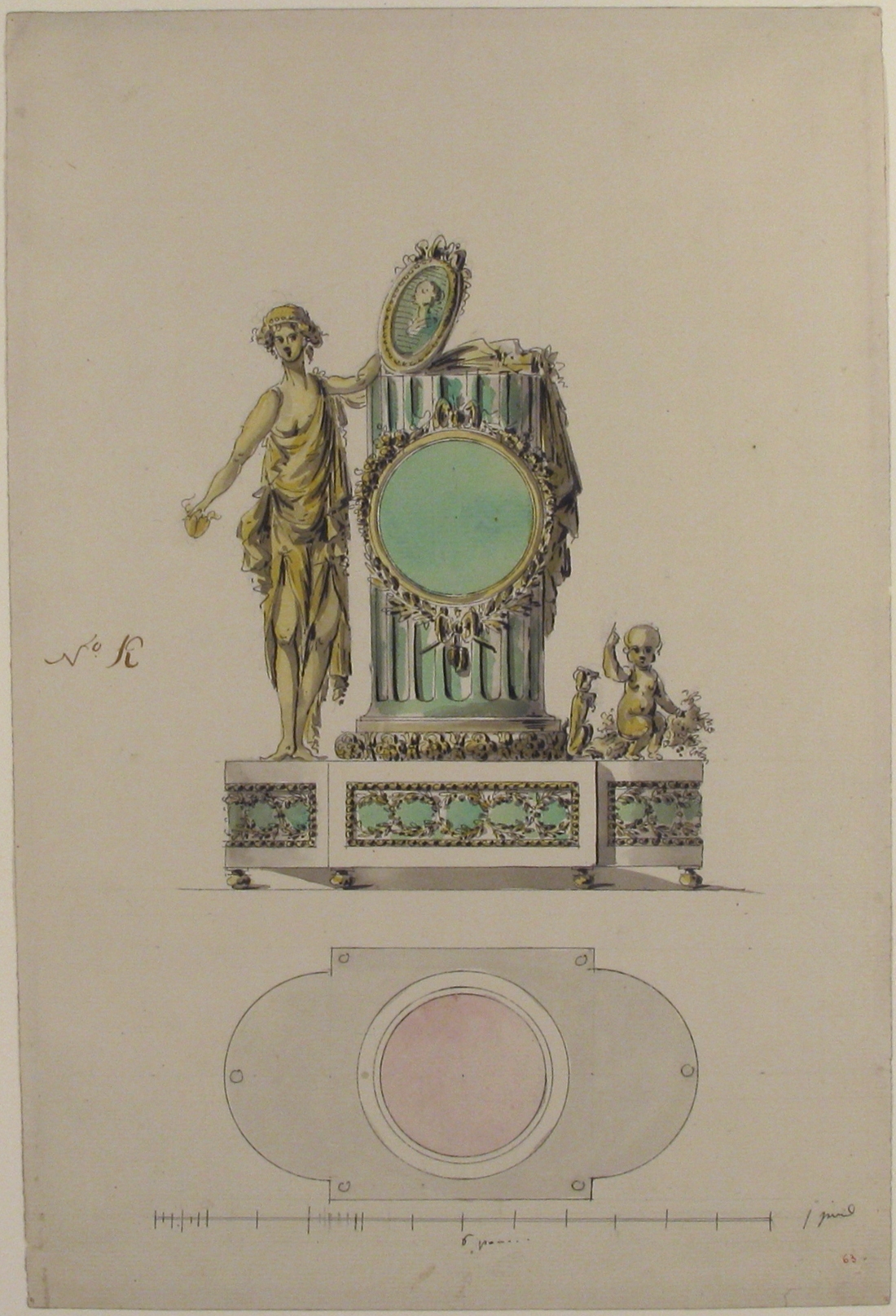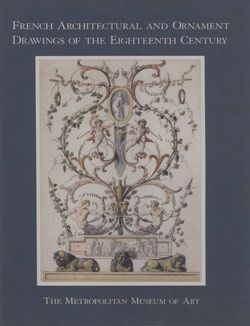Design for a Clock
Anonymous, French, 18th century French
Manufactory French, Sèvres, 18th century
Not on view
This drawing of a small porcelain mantel clock was made for Prince Albert Casimir, Duke of Teschen. When he was appointed governor to the Austrian Netherlands in 1781 he had a new palace built in the city of Brussels. He ordered drawings of the finest examples of Parisian furniture, to decide how best to furnish his new residence. This particular drawing is part of that group and reproduces a Sèvres porcelain clock, which must have been a very popular model at the time. Marie-Antoinette had a version in blue in her apartments at the castle of Versailles, and a similar example with a mechanism by the Master Clockmaker Charles Dutertre is kept in the department of European Sculpture and Decorative Art of the Metropolitan Museum of Art. A version in green is in the Museum of Fine Arts in Boston, and a lighter blue variant is known in the collection of the Philadelphia Museum of Art. The different colors indicate that the model could likely be customized to fit the client’s preferences. This is also apparent from the oval medallion, held up by the female figure on top of the column, which is still attached in the clocks from Boston and Philadelphia and each display a different content.
Due to rights restrictions, this image cannot be enlarged, viewed at full screen, or downloaded.
This artwork is meant to be viewed from right to left. Scroll left to view more.





